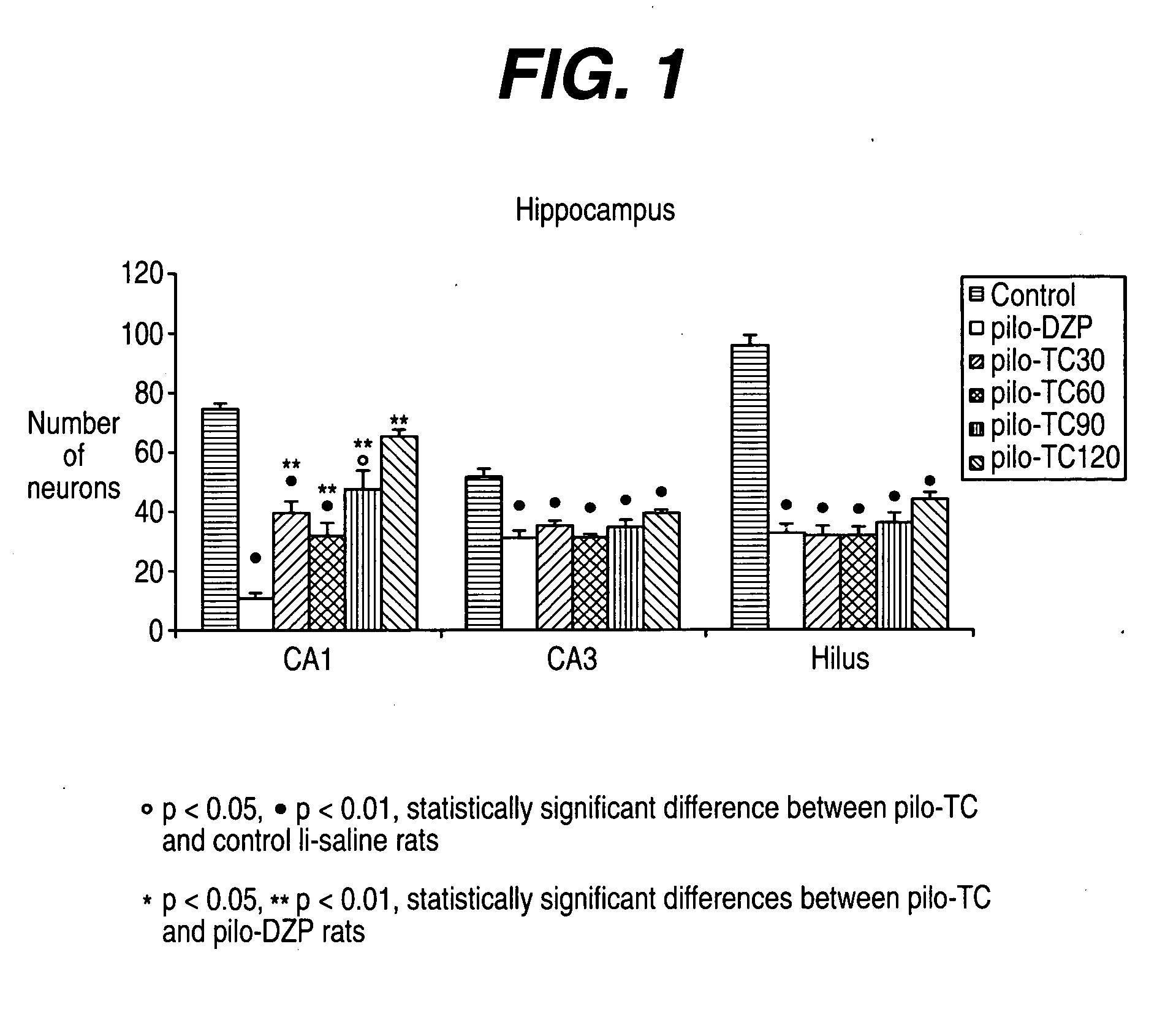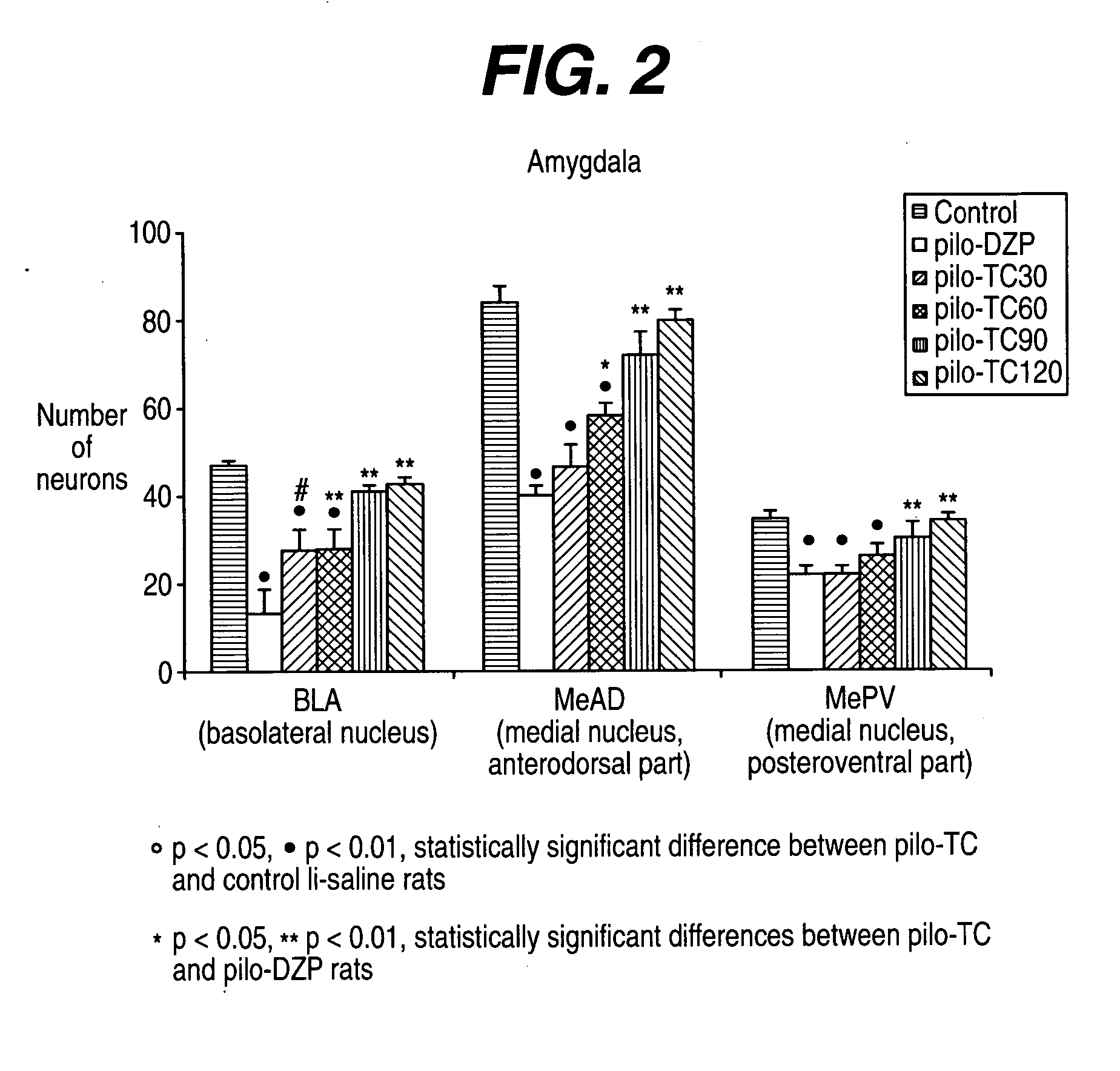Methods of treating epileptogenesis
a technology of epileptogenesis and treatment methods, applied in the field of epileptogenesis, can solve the problems of debilitating symptoms of seizure or seizure-related disorder, individual becoming more susceptible to recurrence, and progressive non-responsiveness to treatmen
- Summary
- Abstract
- Description
- Claims
- Application Information
AI Technical Summary
Benefits of technology
Problems solved by technology
Method used
Image
Examples
example 1
The lithium-pilocarpine Model of Temporal Lobe Epilepsy
[0150] The model induced in rats by pilocarpine associated with lithium (Li-Pilo) reproduces most of the clinical and neurophysiological features of human temporal lobe epilepsy (Turski et al., 1989, Synapse 3:154-171; Cavalheiro, 1995, Ital J Neurol Sci 16:33-37). In adult rats, the systemic administration of pilocarpine leads to status epilepticus (SE). The lethality rate reaches 30-50% during the first days. In the surviving animals, neuronal damage predominates within the hippocampal formation, the piriform and entorhinal cortices, thalamus, amygdaloid complex, neocortex and substantia nigra. This acute seizure period is followed by a “silent” seizure-free phase lasting for a mean duration of 14-25 days after which all animals exhibit spontaneous recurrent convulsive seizures at the usual frequency of 2 to 5 per week (Turski et al., 1989, Synapse 3:154-171; Cavalheiro, 1995, Ital J Neurol Sci 16:33-37; Dube et al., 2001, E...
example two
[0174] The aim of the present project was to pursue the study reported in Example one above on the potential neuroprotective and antiepileptogenic properties of the test compound (TC) in the lithium-pilocarpine (Li-Pilo) model of temporal lobe epilepsy. In the first study it was shown that TC was able to protect areas CA1 and CA3 of the hippocampus, piriform and ventral entorhinal cortex from neuronal damage induced by Li-Pilo status epilepticus (SE). Most of these neuroprotective properties occurred at the highest dose studied, 60 mg / kg and the treatment was able to delay the occurrence of spontaneous seizures in 36% (4 out of 11) of the rats. In the present example, the consequences of treatment by higher doses of TC on neuronal damage and epileptogenesis is studied
The Lithium-pilocarpine Model of Temporal Lobe Epilepsy
[0175] The model of epilepsy induced in rats by pilocarpine associated with lithium (Li-Pilo) reproduces most of the clinical and neurophysiological features of ...
example 2
References for Example 2
PUM
| Property | Measurement | Unit |
|---|---|---|
| weight | aaaaa | aaaaa |
| frequency | aaaaa | aaaaa |
| seizure threshold | aaaaa | aaaaa |
Abstract
Description
Claims
Application Information
 Login to View More
Login to View More - R&D
- Intellectual Property
- Life Sciences
- Materials
- Tech Scout
- Unparalleled Data Quality
- Higher Quality Content
- 60% Fewer Hallucinations
Browse by: Latest US Patents, China's latest patents, Technical Efficacy Thesaurus, Application Domain, Technology Topic, Popular Technical Reports.
© 2025 PatSnap. All rights reserved.Legal|Privacy policy|Modern Slavery Act Transparency Statement|Sitemap|About US| Contact US: help@patsnap.com



